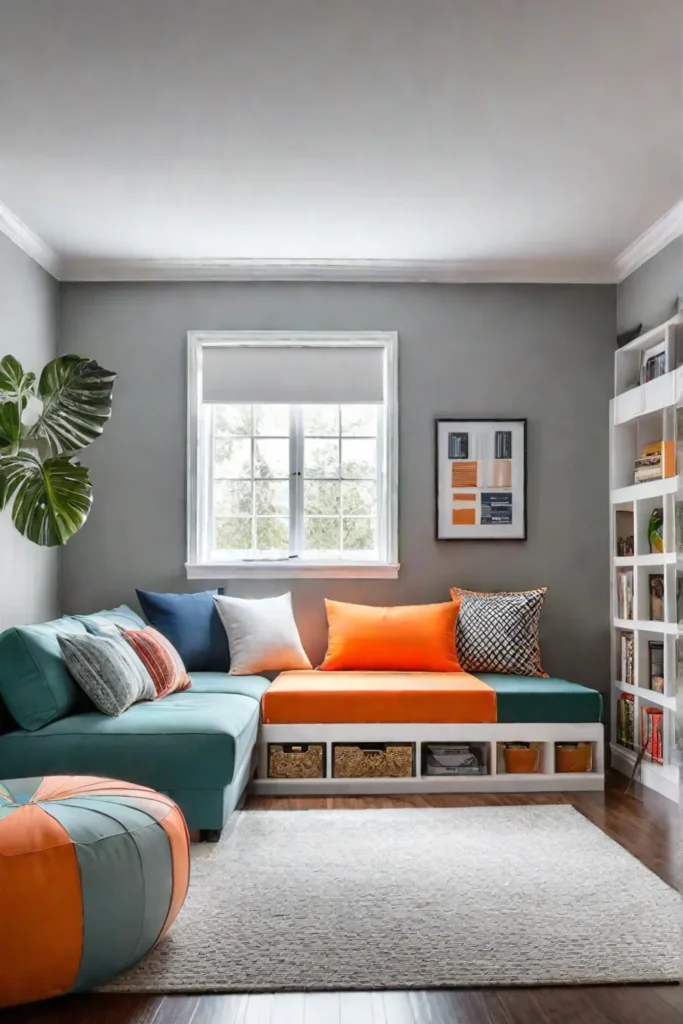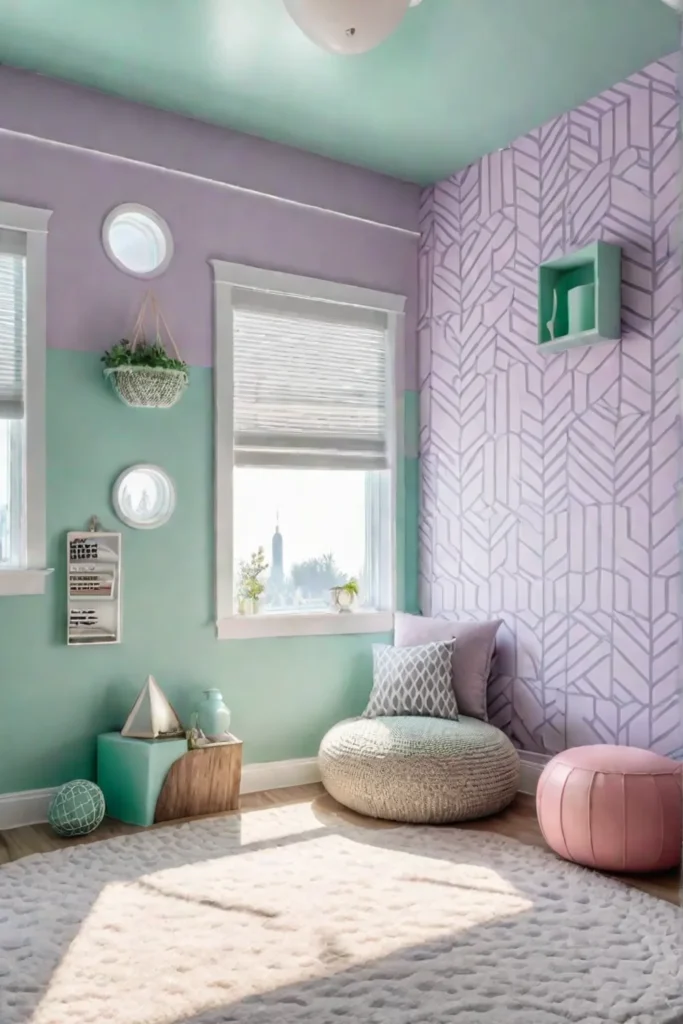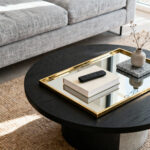Imagine a space where imagination takes flight, where every corner sparks creativity and wonder. Welcome to the captivating world of modern playroom design, where primary colors are just the beginning of a vibrant adventure. Buckle up because we’re about to embark on a whimsical journey that will transform how you perceive children’s play spaces.
In a world where technology constantly vies for our attention, creating environments that nurture a child’s innate curiosity and love for exploration is more important than ever. Modern playroom design is not just about aesthetics; it’s about crafting spaces that stimulate the senses, encourage hands-on learning, and foster a sense of wonder.

This article will unveil the latest trends in playroom design, from tranquil pastel palettes to dynamic geometric patterns, natural materials that connect with the great outdoors, and interactive elements that blur the lines between play and discovery. Prepare to be inspired as we delve into a realm where function and beauty intertwine, creating spaces that delight the eye and nourish the mind, body, and soul.
Embracing Pastel Palettes: A Serene Escape
Step into a world of soft hues and tranquil tones, where the gentle embrace of pastel colors envelops you in a serene escape. Gone are the days of overwhelming primary shades; modern playroom design has embraced the calming allure of muted pastels, creating spaces that soothe the senses and inspire creativity.

Imagine a playroom adorned with the delicate blush of a rose petal, complemented by the soothing mint green of a lush meadow. Or perhaps a dreamy lavender hue that dances across the walls, inviting little ones to let their imaginations soar. These pastel palettes not only offer a visually stunning aesthetic but also have the power to promote focus and relaxation in children.
“As a designer, I’ve witnessed firsthand how pastel colors can transform a playroom into a tranquil oasis,” shares interior designer Emily Williams. “The soft, muted tones create a sense of serenity that allows children to immerse themselves in play without feeling overwhelmed.”
Moreover, pastel palettes are timeless, allowing the playroom to evolve as the child grows gracefully. By incorporating neutral accents and versatile furnishings, these spaces can seamlessly transition from a cozy nook for toddlers to a sophisticated retreat for older children.

To achieve a harmonious pastel paradise, consider balancing the muted tones with warm wood accents or crisp white elements. Experiment with layering different shades of pastels, creating depth and visual interest while maintaining a cohesive and calming atmosphere. And don’t be afraid to add pops of bolder hues through carefully curated accessories or artwork, striking the perfect balance between serenity and playfulness.
Geometric Patterns and Shapes: A Playground for the Mind
In modern playroom design, geometric patterns and shapes have emerged as captivating elements that delight the eye and stimulate cognitive development. These dynamic motifs transform ordinary spaces into engaging canvases encouraging pattern recognition, problem-solving, and creative thinking.

Imagine a room where the floor is adorned with a mesmerizing hexagonal pattern, inviting little feet to dance across its intricate lines. Or a wall decorated with triangular shelves, beckoning children to arrange their toys in ever-changing configurations, fostering spatial awareness and organizational skills.
“Geometric patterns and shapes are more than just visually appealing; they’re powerful tools for nurturing a child’s cognitive abilities,” explains child psychologist Dr. Sarah Thompson. “By exposing children to these elements early, we can help them develop critical thinking skills and a deeper understanding of the world around them.”
Beyond their educational benefits, geometric motifs infuse a sense of playfulness and energy into the space. Experiment with bold wallpaper designs, vibrant area rugs, or eye-catching textiles that incorporate geometric patterns. Balance these dynamic elements with organic shapes and textures, creating a harmonious blend of structure and fluidity.

Consider incorporating geometric shapes into the furniture and decor, such as a triangular play tent or a hexagonal coffee table. These functional yet whimsical pieces add visual interest and encourage imaginative play and exploration.
Embracing Natural Materials: A Connection to the Great Outdoors
In a world increasingly dominated by technology and artificial environments, modern playroom design has embraced a return to nature, incorporating organic materials that foster a connection to the great outdoors. From warm wood tones to woven rattan textures, these natural elements create a warm and inviting atmosphere that soothes the soul and nurtures a child’s innate curiosity.

Imagine a playroom with a stunning wooden play structure taking center stage, its smooth curves and natural grains beckoning little hands to explore. Or a cozy nook adorned with a rattan hanging chair, inviting children to curl up with a book and let their imaginations wander.
“Incorporating natural materials into a playroom not only adds a beautiful aesthetic, but it also provides a profound sensory experience for children,” says environmental psychologist Dr. Emily Green. “The tactile textures, earthy scents, and organic shapes help foster a deeper connection with the natural world, promoting a sense of grounding and well-being.”
Beyond their calming presence, natural materials like linen and cotton textiles offer breathability and durability, ensuring the playroom remains a comfortable and long-lasting space. Integrate these organic fibers into curtains, upholstery, and cozy floor cushions, creating inviting nooks for reading, relaxing, and imaginative play.

To truly embrace the biophilic design, consider incorporating living elements like potted plants or a small indoor garden. Not only do these green additions purify the air, but they also teach children about the wonders of nature and the importance of nurturing living things.
Integrating Interactive Elements: A Playground for Imagination
In the ever-evolving world of modern playroom design, interactive elements have emerged as captivating features that blur the lines between play and learning. From built-in play structures to cutting-edge technology, these hands-on elements encourage children to engage with their environment, fostering physical, cognitive, and social development.

Imagine a playroom where a rock-climbing wall beckons little adventurers to scale new heights, building strength, coordination, and confidence with every ascent. Or a vibrant touch-screen surface that transforms into a digital canvas, allowing children to unleash their creativity through interactive art and coding experiences.
“Interactive elements in a playroom are more than just fun and games; they’re powerful tools for nurturing a child’s holistic development,” explains child development expert Dr. Michael Johnson. “By encouraging hands-on exploration and problem-solving, these features help children build essential skills that will serve them well throughout their lives.”
Beyond physical structures, consider incorporating multipurpose furniture that can be easily rearranged or transformed, empowering children to take ownership of their play space. A few examples of how adaptable furnishings can ignite a child’s imagination are a convertible play table that transforms from a flat surface to a fort or a chalkboard wall that invites spontaneous artistic expression.

As technology evolves, playrooms can also embrace interactive digital experiences that foster coding, robotics, and computational thinking skills. From programmable robots to augmented reality games, these cutting-edge tools captivate children’s attention and equip them with invaluable skills for the future.
Incorporating Statement Lighting: A Theatrical Touch
In modern playroom design, lighting has transcended its functional role to become a captivating element that adds drama, ambiance, and a touch of whimsy. From oversized pendants to sculptural installations, statement lighting has emerged as a key trend, transforming ordinary spaces into theatrical stages where imagination takes center stage.

Imagine a playroom where a massive, geometric pendant light cascades from the ceiling, casting intricate shadows and creating a sense of wonder. Or a space where dimmable, color-changing lights allow children to curate their atmospheric experiences, transitioning from a vibrant, energetic palette to a calming, dreamy glow with the touch of a button.
“Lighting can completely transform a space, evoking emotions and setting the stage for imaginative play,” explains lighting designer Sarah Wilson. “By incorporating statement lighting into a playroom, we can create a sense of magic and whimsy that captivates children’s imaginations.”

In addition to their visual impact, thoughtful lighting design can influence a child’s mood, behavior, and overall well-being. Incorporating natural light through large windows or skylights can create a bright and airy atmosphere, while strategically placed task lighting can help define different zones within the playroom, such as a cozy reading nook or a designated arts and crafts area.
When selecting statement lighting, consider pieces that dazzle and serve as conversation starters. A whimsical chandelier crafted from repurposed materials or a sculptural installation that casts playful shadows can spark curiosity and encourage children to explore the interplay between light and shadow.
Conclusion
As we bid farewell to this whimsical journey through modern playroom design, one thing becomes abundantly clear: the possibilities for creating truly remarkable and transformative spaces are limitless. By embracing pastel palettes, geometric patterns, natural materials, interactive elements, and statement lighting, we can craft environments that delight the senses and nurture a child’s holistic development.

These innovative design trends transcend aesthetics, offering profound benefits extending far beyond the playroom walls. From fostering cognitive growth and encouraging hands-on exploration to promoting a connection with nature and nurturing emotional well-being, each element is carefully curated to create spaces that inspire, educate, and empower the next generation.
As parents and designers continue to push the boundaries of playroom design, we embark on a journey of discovery where imagination knows no bounds, and every corner holds the promise of wonder and delight. So, let us embrace this creative revolution, crafting spaces that captivate and nurture the boundless potential within every child.










